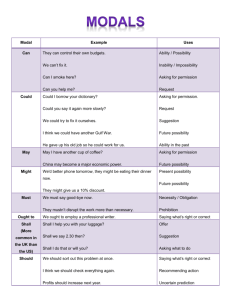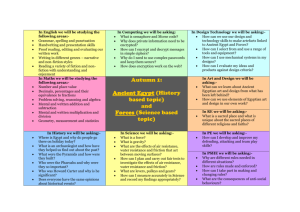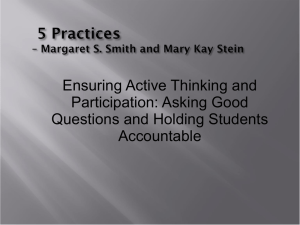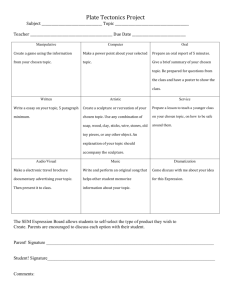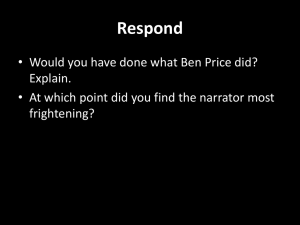Stimulating students to ask feedback
advertisement
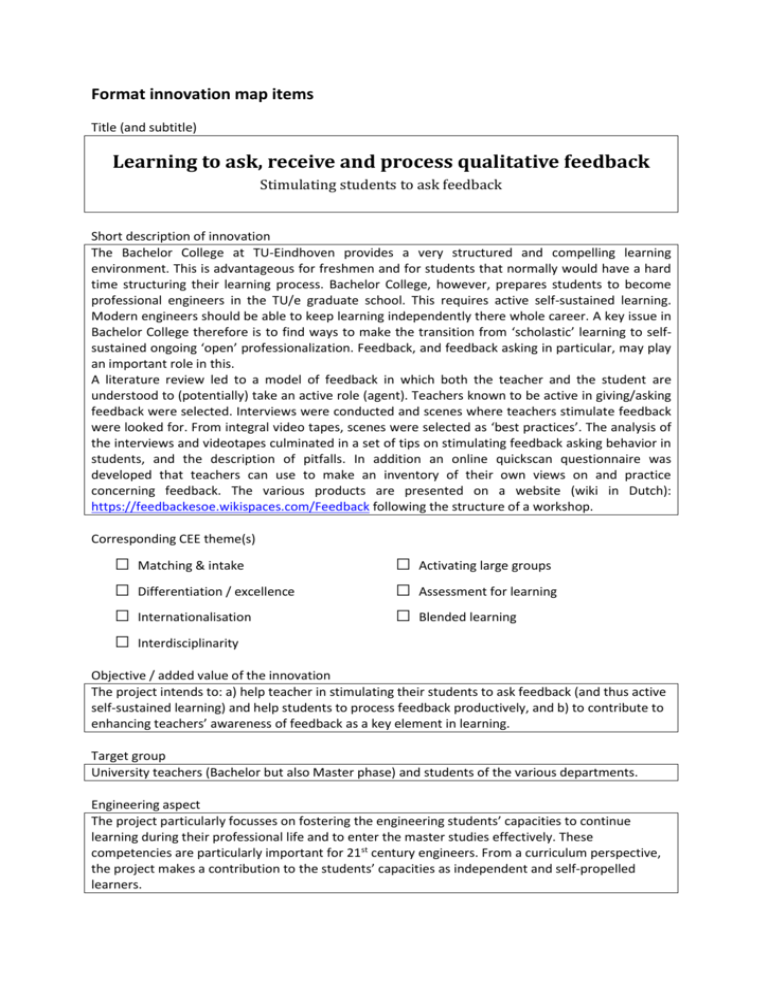
Format innovation map items Title (and subtitle) Learning to ask, receive and process qualitative feedback Stimulating students to ask feedback Short description of innovation The Bachelor College at TU-Eindhoven provides a very structured and compelling learning environment. This is advantageous for freshmen and for students that normally would have a hard time structuring their learning process. Bachelor College, however, prepares students to become professional engineers in the TU/e graduate school. This requires active self-sustained learning. Modern engineers should be able to keep learning independently there whole career. A key issue in Bachelor College therefore is to find ways to make the transition from ‘scholastic’ learning to selfsustained ongoing ‘open’ professionalization. Feedback, and feedback asking in particular, may play an important role in this. A literature review led to a model of feedback in which both the teacher and the student are understood to (potentially) take an active role (agent). Teachers known to be active in giving/asking feedback were selected. Interviews were conducted and scenes where teachers stimulate feedback were looked for. From integral video tapes, scenes were selected as ‘best practices’. The analysis of the interviews and videotapes culminated in a set of tips on stimulating feedback asking behavior in students, and the description of pitfalls. In addition an online quickscan questionnaire was developed that teachers can use to make an inventory of their own views on and practice concerning feedback. The various products are presented on a website (wiki in Dutch): https://feedbackesoe.wikispaces.com/Feedback following the structure of a workshop. Corresponding CEE theme(s) □ Matching & intake □ Differentiation / excellence □ Internationalisation □ Interdisciplinarity □ Activating large groups □ Assessment for learning □ Blended learning Objective / added value of the innovation The project intends to: a) help teacher in stimulating their students to ask feedback (and thus active self-sustained learning) and help students to process feedback productively, and b) to contribute to enhancing teachers’ awareness of feedback as a key element in learning. Target group University teachers (Bachelor but also Master phase) and students of the various departments. Engineering aspect The project particularly focusses on fostering the engineering students’ capacities to continue learning during their professional life and to enter the master studies effectively. These competencies are particularly important for 21st century engineers. From a curriculum perspective, the project makes a contribution to the students’ capacities as independent and self-propelled learners. Strong points and suggestions for improvement Strong point and successes A clear theoretical view (model) was developed on gathering and processing (asking, giving) feedback including both the teacher and the students as active parties (agents). Feedback asking behavior was found to be commonly present in university education, but it appeared to be roughly confined to informal (and low hazard) settings (e.g. co-working hearing (overhoren), checking the correctness of results/problems solving approached by asking the teacher after the lecture has ended, within peer(work)groups, etc. Stimulating students feedback asking behavior appeared to be intuitively and/or implicit in most cases. Some teachers do not consider stimulating feedback asking behavior as part of their jobs. Even though it is recognized as an important aspect of the transition of freshmen-students into master students, academics or engineers. Tips and pitfalls were identified; both from theory and from the practices explored using the interviews and video observations. A website including tips, pittfalls, underpinnings, video examples and selftest was built. Lessons learned The project set out to map the ways in which teachers stimulate feedback asking behavior of students and to define best practices. However, the interviews showed that stimulation of feedback asking behavior in students was mostly informal, and intuitively rather than theoretically informed. Therefore the cases observed are merely examples and we cannot yet certify that these truly are ‘best practices’. Points of interest for implementation The website (wiki in Dutch) comprises a number of tips and good practice. Some key issues: Create a safe atmosphere and reinforce feedback asking behavior Take in account self-efficacy of the individual students, securing asking feedback is a positive experience. Also cultural differences can be relevant Make feedback asking behavior worthwhile through providing adequate and helpful answers Help students processing the feedback they asked for productively thus securing a positive spinoff of their feedback asking behavior Pitfalls: Feedback is not confined to telling what is right/wrong about a student assignment. Even if an answer is wrong, consider positive feedback on ‘the method used’, ‘the apparent aim’, etc. Beware to fail providing students that ask feedback by verifying their results / problem solving approach with straight answers. Rule of thumb: o Students that ask questions or exploring possible problem solving approaches without presenting their own results/ideas should be helped/stimulated to explore the problem or problem solving strategy using open and inviting questions. o Students that verify their current (preliminary) results or proposed problem solving approaches while providing these explicitly to the teacher, should be provided with quick, clear cut, and helpful feedback. Contact info & URL 1. Contact: r.taconis@tue.nl 2. Website (wiki in Dutch): https://feedbackesoe.wikispaces.com/Feedback 3. Quickscan and self-test Dutch (short vers.) http://www.alle-tests.nl/quiz30/quiz/1419780112/Feedback-vraag-gedrag English (diagn. vers.) http://www.corfstart.nl/vragenlijst/Invullen.aspx?idMetaInstrument=695 4. Powerpoint presenting the project in brief (on website) 5. Bestpractices on video (on website)


